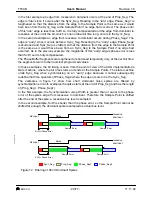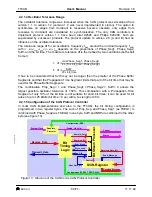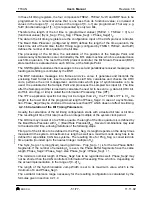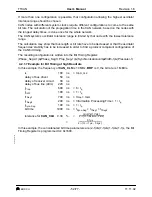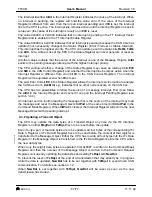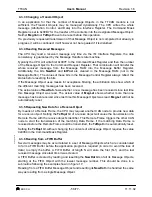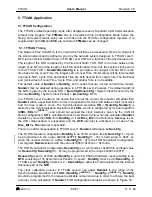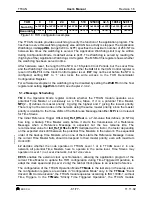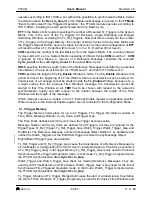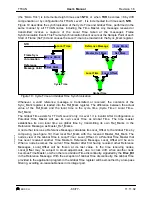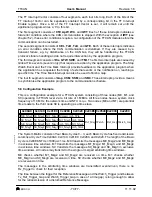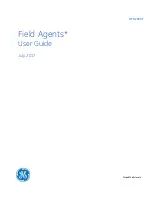
User’s Manual
BOSCH
- 55/77 -
Revision 1.6
TTCAN
11.11.02
manual_about.fm
The Arbitration Registers (ID28-0 and Xtd bit) are given by the application. They define the
identifier and type of accepted received messages. If an 11-bit Identifier (“Standard Frame”) is
used (Xtd = ‘0’), it is programmed to ID28 - ID18, ID17 - ID0 can then be disregarded. When a
Data Frame with an 11-bit Identifier is received, ID17 - ID0 will be set to ‘0’.
The Data Length Code (DLC3-0) is given by the application. When the Message Handler
stores a Data Frame in the Message Object, it will store the received Data Length Code and
eight data bytes. If the Data Length Code is less than 8, the remaining bytes of the Message
Object will be overwritten by non specified values.
The Mask Registers (Msk28-0, UMask, MXtd, and MDir bits) may be used (UMask=’1’) to
allow groups of Data Frames with similar identifiers to be accepted. The Dir bit should not be
masked in typical applications. For details see section 4.1.3.1. If some bits of the Mask
Register are set to “don’t care”, the corresponding bits of the Arbitration Register will be
overwritten by the bits of the stored Data Frame.
If the RxIE bit is set, the IntPnd bit will be set when a received Data Frame is accepted and
stored in the Message Object.
If the TxRqst bit is set, this will cause the transmission of a Remote Frame with the same
identifier as actually stored in the Arbitration Register. The content of the Arbitration Register
may change if the Mask Registers are used (UMask=’1’) for acceptance filtering.
4.2.2.3 Configuration of a FIFO Buffer
With the exception of the EoB bit, the configuration of Receive Objects belonging to a FIFO
Buffer is the same as the configuration of a (single) Receive Object, see section 4.2.2.2.
To concatenate two or more Message Objects into a FIFO Buffer, the identifiers and masks (if
used) of these Message Objects have to be programmed to matching values. Due to the
implicit priority of the Message Objects, the Message Object with the lowest number will be
the first Message Object of the FIFO Buffer. The EoB bit of all Message Objects of a FIFO
Buffer except the last one have to be programmed to
zero
. The EoB bits of the last Message
Object of a FIFO Buffer is set to
one
, configuring it as the End of the Block.
4.2.2.4 Configuration of a Single Receive Object for Remote Frames
Figure 14 shows how a Receive Object should be initialised.
Figure 16: Initialisation of a single Receive Object
Receive Objects for Remote Frames may be used to monitor Remote Frames on the CAN bus.
The Remote Frame stored in the Receive Object will not trigger the transmission of a Data
Frame. Receive Objects for Remote Frames may be expanded to a FIFO buffer.
UMask must be set to ‘1’. The Mask Registers (Msk28-0, UMask, MXtd, and MDir bits) may
be set to “must-match” or to “don’t care”, to allow groups of Remote Frames with similar
identifiers to be accepted. The Dir bit should not be masked in typical applications. For details
see section 4.1.3.2.
The Arbitration Registers (ID28-0 and Xtd bit) may be given by the application. They define
the identifier and type of accepted received Remote Frames. If some bits of the Mask Register
are set to “don’t care”, the corresponding bits of the Arbitration Register will be overwritten by
the bits of the stored Remote Frame. If an 11-bit Identifier (“Standard Frame”) is used (Xtd =
MsgVal Arb Data Mask EoB Dir NewDat MsgLst RxIE TxIE IntPnd RmtEn TxRqst
1
appl. appl.
appl.
1
1
0
0
appl.
0
0
0
0









